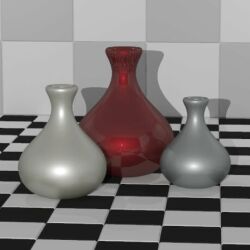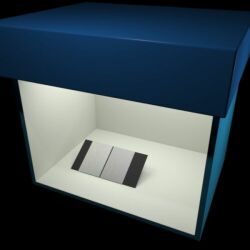 |
Computer Graphic Rendering of Material Surfaces |
 |
 |
Computer Graphic Rendering of Material Surfaces |
 |
BRDF
One of the most general means to characterize the reflection properties of a surface is by use of the bi-directional reflection distribution function (BRDF), a function which defines the spectral and spatial reflection characteristic of a surface. The BRDF of a surface is the ratio of reflected radiance to incident irradiance at a particular wavelength:
where the subscripts i and r denote incident and reflected respectively,is the direction of light propagation,
is the wavelength of light, L is radiance, and E is irradiance. The geometry used by the BRDF is shown below in Figure 1.
Figure 1: Light reflection geometry
|
Privacy Statement/Security Notice | Disclaimer | FOIA NIST is an agency of the U.S. Commerce Department's Technology Administration. |